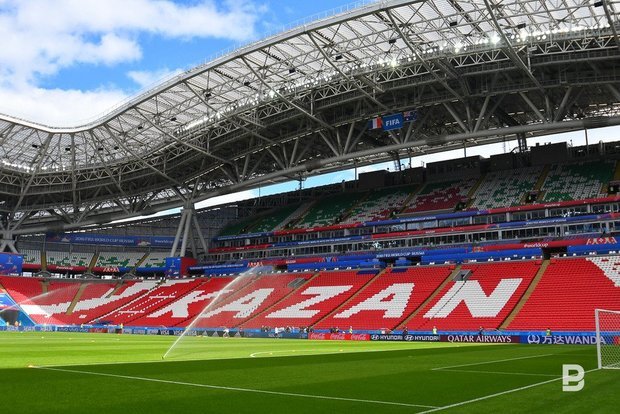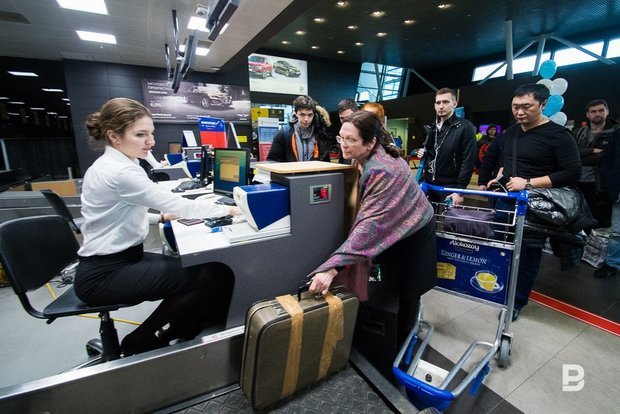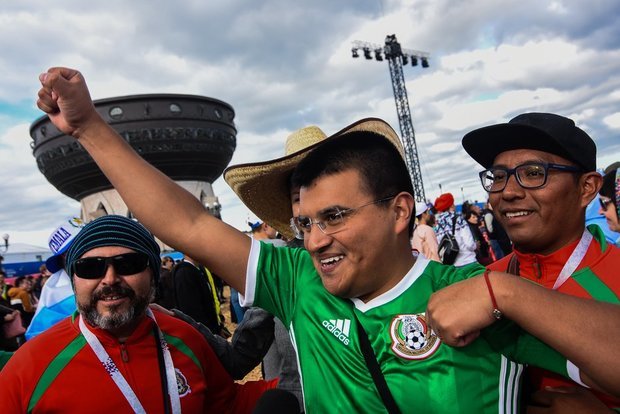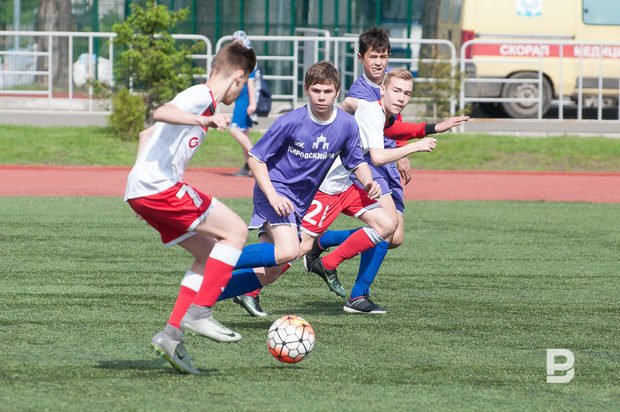World Cup legacy: what will WC give Russia?
Analysts have assessed the costs for 2018 World Cup and economic ‘’exhaust’’ from its hosting
Analysts of JLL, specializing in commercial real estate and investments, assessed the costs for the infrastructure for the World Cup in Russia and made a forecast of the economic effect of its hosting. The investments totaling 683 billion rubles are to bring the country 235 billion rubles in 2018 and 150-210 billion rubles annually in the next five years. At the same time, Fitch Ratings analysts believe that in the long term economically weak regions will not be able to pay for maintenance of the new stadiums, and Russia as a whole, like Brazil, will not receive significant revenues from the hosting of the championship. Read the details in the material of Realnoe Vremya.
World Cup for 683 billion rubles
According to a JLL analytical study, already in 2013 the Russian government planned to spend 664,1 billion rubles for the World Cup, 437,8 billion rubles of which were supposed to be allocated from the federal and regional budgets, and 226,3 billion rubles (34%) — to receive from private investors. According to the official assessment for April 2018, the figures increased by almost 20 billion rubles — the costs amounted to 683 billion rubles, the share of investor participation decreased from 34% to 28,9%. Most of the funds were provided by the federal budget – 57,6%, the remaining 13,5% was found in regional budgets.
The preparation of sports infrastructure cost 265 billion rubles, transport infrastructure — 228 billion rubles. Other funds were spent on other infrastructure and operating costs.
As it is known, the World Cup is held in 11 Russian cities. According to the report of the organizing committee, 570,000 foreign football fans are expected to visit the country. There will be about 695,000 Russian fans at the matches. The increase in total earned income during the preparation for the World Cup and its hosting was estimated at 414 billion rubles, the increase in revenue of small and medium-sized businesses — 736 billion rubles, and the number of new jobs created – 220,000.

Cheapest Kazan Arena and expensive Saint Petersburg Stadium
In addition to improving the infrastructure of the cities, the main work in the preparation for the World Cup was the construction of stadiums. JLL analysts calculated on the basis of the data of the organizing committee and open sources that an average of 20,3 billion rubles was spent per one stadium. Kazan Arena turned out to be one of the cheapest facilities — less was spent only on the reconstruction of Yekaterinburg Arena. If we take into account only the constructed stadiums, then it is the cheapest.
Costs for stadiums:
1. Yekaterinburg Arena for 35,000 people – reconstruction cost 12,2 billion rubles;
2. Kazan Arena for 45,000 people — construction cost 14,4 billion rubles;
3. Spartak (Otritie Arena) for 45,000 people — construction cost 14,5 billion rubles;
4. Mordovia Arena for 44,000 people — construction cost 15,8 billion rubles;
5. Volgograd Arena for 45,000 people — construction cost 16,3 billion rubles;
6. Kaliningrad for 35,000 people — construction cost 17,4 billion rubles;
7. Samara Arena 45,000 people — construction cost 18,9 billion rubles;
8. Rostov Arena for 45,000 people — construction cost 19,8 billion rubles;
9. Luzhniki for 81,000 people — reconstruction cost 26,6 billion rubles;
10. Fisht for 45,000 people — construction and reconstruction cost 27 billion rubles;
11. Saint Petersburg for 68,000 people — construction cost 43 billion rubles.

Record-breaking investments
One third of all funds went for transport infrastructure. The leader by investments (59 billion rubles) is Rostov Oblast, where the airport Platov was built from scatch in Roston-on-Don. Another 12 airports increased their capacity for the World Cup. A total of 118 billion rubles was spent on airports. In addition, 20 railway stations and stations have been modernized and reconstructed.
The second place by spending on infrastructure – the work with road network, which required 32 billion rubles. In total, 178 km of roads were constructed and reconstructed by the World Cup.
The third place by costs is taken by urban passenger transport, which required investments of 20 billion rubles. With this money, in Moscow, St. Petersburg and Nizhny Novgorod there were built new metro stations — five, two and one respectively. We will remind that another station was to be opened in Kazan, but the residents of the city have not seen Dubravnaya station so far.
According to JLL, 56 new branded hotels for 10,349 rooms appeared in the country in 2014-2018.
If we consider the volume of investments in Russia in comparison with other countries that hosted the World Cup from 1998, we can say that they are comparable only with Brazil. The last two sites of the World Cup spent 11,6 billion dollars on it. By investments in stadiums per each Russia turned out to be the leader, spending an average of 380 million dollars per an arena. In total, only South Korea and Japan surpassed it with 4,5 billion dollars, which spent 4,6 billion dollars on stadiums for the World Cup in 2002.

Legacy of the World Cup promises positive prospects
The organizing committee of the 2018 World Cup preliminary estimated the effect of the World Cup on the country's economy for 2013-2018 at 867 billion rubles — about 1% of annual GDP. This amount mainly consists of investments and operating costs at 746 billion rubles. The influx of tourists is projected to give Russia 121 billion rubles in 2018, and the total effect of the event will be 235 billion rubles. It is expected that in the next five years after the World Cup it will annually bring 150-210 billion rubles to the economy, 40-70 billion of which will come from the tourism sector.
In dollars, the total impact of the World Cup on the economy will be 15 billion — it is comparable to Brazil and Japan. The effect on the country's GDP is second only to South Africa — where it was 2%.
It is assumed that the World Cup will give impetus to the development of football in the country, increase the flow of tourists and will attract mass events in the future. In the latter case, it is not necessary to go far for an example — Kazan after 2013 Universiade now chooses itself what competitions to host according to the submitted applications.
Just as Kazan Arena is used in the capital of Tatarstan as a home stadium of Rubin, so in other cities after the World Cup the sites will be given to football teams. In addition, according to the draft resolution of the government of the Russian Federation ''On approval of the concept of the World Cup legacy'', stadiums can be used as multifunctional facilities. From all the stadiums, only two will not become home sites for football clubs. This is Luzhniki, where it is planned to hold matches of the national team, as well as Fisht in Sochi, which will be the reserve stadium of one or more teams for holding matches of the football championship of Russia and matches of the Cup of Russia.

Will regions cope with maintenance of the stadiums?
Despite positive expectations, Fitch Ratings predicted that some Russian cities would not be able to maintain the constructed and reconstructed stadiums in the long term. According to analysts, large regions such as Moscow and St. Petersburg will need about 400 million rubles for the maintenance of sports facilities without a significant impact on creditworthiness.
But problems with maintenance may arise in financially weak regions, whose annual budget revenues, according to analysts, range from 35 billion to 85 billion rubles. They cite Mordovia as an example, which has a large regional debt, low operating balance and weak institutional environment. Due to the cost of the World Cup in 2017, the region received the highest budget deficit in the last four years (27% against the annual average of 18%). But here a smoothing factor analysts believe to be the fact that 63% of all debt of Mordovia is to the federal government, which determined the interest rate at 0,1%.
The example of Brazil, according to the Fitch Ratings release, confirms a possible growing burden on the budget and concerns about a small increase in revenues after the World Cup. There, during the World Cup and after it, the public debt went up. At the same time, hotel taxes and temporary jobs created gave an increase in tax revenues by less than 5% in 2014 (the year of the World Cup). According to JLL, the championship gave the country minus 0,6% of GDP. At the same time, Russia is not Brazil. The total regional debt in the country decreased in 2017 by 31 billion rubles to 2,23 trillion rubles.
''It is the first decrease in absolute terms for more than a decade. According to our estimates, the median level of expenses associated with the World Cup was 13% of annual revenues for 2017 and about 20% of accumulated debt at the end of 2017. At the same time, Brazil's national debt grew more rapidly during the World Cup and immediately after. Brazil's national debt increased by 32,4% in 2015, amounting to 205 billion Brazilian reals, or 3,4% of Brazil's GDP,'' Fitch analysts say.